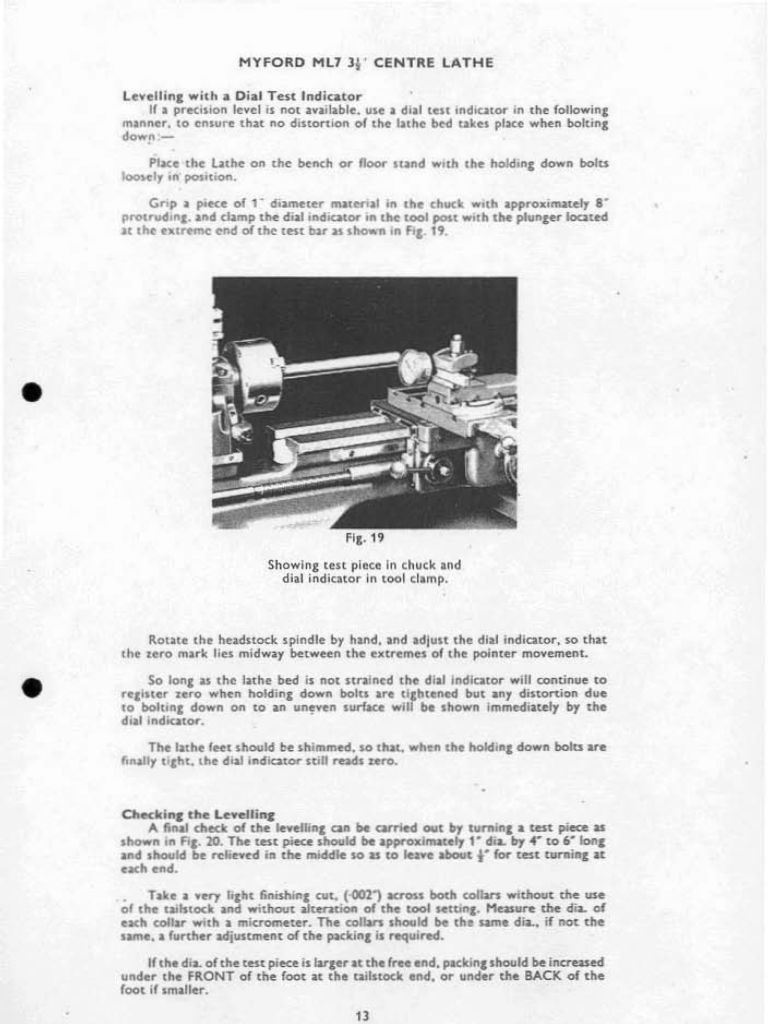Hello:
Posted by SillyOldDuffer on 11/06/2023 11:38:05:
… good questions!
Yes, can't ask for what is simply not there.
… start with a mini-lathe didn't do well until I learned to blame TOM.
Indeed … 8^D !!!
T for tool. Plenty to go wrong on a lathe, especially …
So I have come to learn.
Being mechanically oriented and confident in my manual dexterity (if you will) the first order of things for me was to take it all apart and thoroughly clean up everything, piece by piece. As you may imagine, this immediately lead to replacing the headstock bearings, the cross-slide gib, attempting to reduce the axial play in the carrier lead screw and doing something about the hand-wheels, tasks which are for the most part finished.
… tools get more blame than they deserve … | … even indifferent lathes can produce good results.
Indeed, but in the hands of an experienced machinist.
… operator causes most of the trouble …
Yes. In another life I worked a few years in IT and PICNIC (problem in chair not computer) was the culprit over 80% of the time.
… self-taught, so lots of mistakes, painfully slow progress, and re-inventing the wheel.
I can fully relate to that.
… list of operator errors … … wobbly work-holding … | … not locking unused axes … | … not realising cutters are blunt … | … choosing the wrong type of cutter … | … RPM, feed-rate and or depth of cut wrong … | … not on centre-height … | … excessive overhang …
Yes, guilty on all counts.
Spinning work hitting something. Not realising work, cutters and the lathe can all bend. Pushing the machine too hard …
These last ones are the worst ones as the damage they can cause can be important.
Also guilty.
… especially small-ones, aren't built for … | … The operator has to find the sweet-spot.
Quite so.
I am slowly but steadily finding my footing. As in most things in life, experience is paramount but something to be acquired as transmisison is always difficult, sometimes impossible. And then, many times, only the hard way.
… gremlins infesting my workshop caught me out good and proper by filling my beginner junk-box with unsuitable scrap – all of it.
Same here. I am an avid skip-diver as I loathe seeing what seems recoverable/reciclable materials get discarded. I have recovered a great many things which have saved me both time and money many times.
To wit: my self-made, gas fired coffee roaster was made using over 75% recycled/skip recovered parts and materials.
With respect to metal for use on the U3, I have been able to spot the worst. It is the borderline stuff that will get me into trouble.
eg: I can properly identify most unusable stuff such as soft sticky Al, seamed pipe or metals that look / feel as they cannot be used. But I have work-hardened steel. Lack of proper training and dull / inapropiate tools have played an important part.
But I have had good luck with a piece of SAE68 bronze I am using in an attempt to machine a new led screw nut for the cross-slide which has an incredible amount of wear.
… self-taught beginner starting out with a worn or maladjusted lathe …
Can't help being self-taught, time and patience will fix that but I am slowly making progress fixing a worn lathe with adjustment problems. Eventually, I guess.
See next post …
Edited By Julius Henry Marx on 11/06/2023 16:09:42
Hopper.







